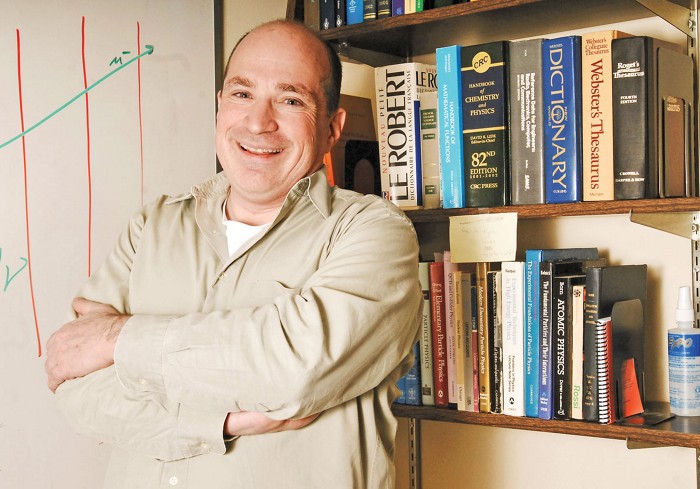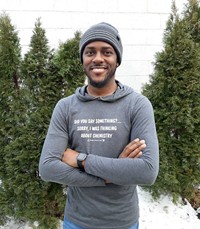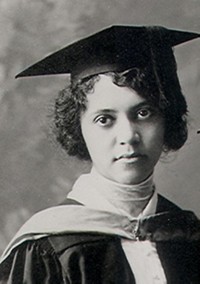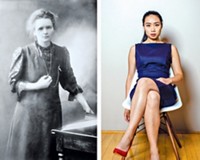Advertisement
Grab your lab coat. Let's get started
Welcome!
Welcome!
Create an account below to get 6 C&EN articles per month, receive newsletters and more - all free.
It seems this is your first time logging in online. Please enter the following information to continue.
As an ACS member you automatically get access to this site. All we need is few more details to create your reading experience.
Not you? Sign in with a different account.
Not you? Sign in with a different account.
ERROR 1
ERROR 1
ERROR 2
ERROR 2
ERROR 2
ERROR 2
ERROR 2
Password and Confirm password must match.
If you have an ACS member number, please enter it here so we can link this account to your membership. (optional)
ERROR 2
ACS values your privacy. By submitting your information, you are gaining access to C&EN and subscribing to our weekly newsletter. We use the information you provide to make your reading experience better, and we will never sell your data to third party members.
Science Communication
Newscripts
Newscripts at the Oscars: Barbenheimer double feature
by Brianna Barbu
March 4, 2024
| A version of this story appeared in
Volume 102, Issue 7
Science in the scenery

Oppenheimer, last summer’s blockbuster biopic—now nominated for 13 Oscars—about J. Robert Oppenheimer, the man who headed up the Manhattan Project, goes to great lengths to make viewers feel as if they’re in the room with the people trying to figure out if an atomic bomb will set off a nuclear chain reaction in the atmosphere. The film owes this immersive experience in part to the real scientists who lent their expertise to getting the scientific and historical details just right, even down to the sets and props.
David Saltzberg, a particle physicist at the University of California, Los Angeles, was one of those scientists. His contribution to the film involved creating about two dozen chalkboards for scenes shot in and around Los Angeles, which included the parts of the movie set at Cambridge and other European universities and the Berkeley Radiation Laboratory at the University of California, Berkeley.
“The prop masters are wonderful at creating these worlds where, whatever the actors and directors might decide to do, there’s a little reality underneath,” Saltzberg tells Newscripts. His job was to work with them to make sure the reality depicted was grounded in historical and scientific accuracy. Even if the chalkboards were mostly out of focus in the background of the film and obscured by the actors in the foreground, they were still essential to the world-building.
Designing a chalkboard for a particular scene required considering not only the scientific subject matter but also “the life of the chalkboard in the minutes or hours that it was being filled,” Saltzberg says. A board for a lecture hall would be organized, for example, while one meant for a research space would be messy, with half-drawn schematics and snippets of equations.
He says his favorite chalkboard was one illustrating a nuclear reaction using historically accurate names for radioactive elements. Many of these elements were later renamed after scientists, including Albert Einstein, Ernest Lawrence, and Lise Meitner. The most difficult assignment was creating a chalkboard written entirely in an old German script for a scene depicting a lecture by Werner Heisenberg.
This Barbie believes in lab safety

Though Barbie has over 200 jobs on her résumé, she isn’t exactly renowned for being an accurate representation of the real world. Fortunately, Katherine Klamer, a grant writer at the Indiana University School of Medicine, has the data to show exactly how Barbie should improve her portrayal of careers in science and medicine.
In a study for the humorous Christmas issue of the BMJ last year (2023, DOI: 10.1136/bmj-2023-077276), Klamer examined 80 medical Barbies and 12 laboratory scientist Barbies to gauge how well they represented the careers they were meant to depict. Given the popularity of the Barbie movie last year, Klamer—who collects dolls as a hobby—felt pretty confident that the journal would appreciate a Barbie-related study. “I saw the opportunity, and I took it,” she tells Newscripts.
Perhaps unsurprisingly, given that the dolls are marketed to kids, Klamer observed that most of the doctor Barbies were pediatricians or general practitioners. The scientist dolls she looked at frequently came with microscope and Erlenmeyer flask accessories, suggesting that they were probably biologists or chemists.
Klamer also found that the majority of scientist dolls came with safety glasses and a lab coat, but none of them met all of her university’s lab-safety requirements. The most common safety sins they committed were not having their legs fully covered or long hair tied back.
The study was just for fun, but Klamer says she genuinely believes that Barbie dolls should accurately represent the broad range of careers that kids can aspire to, especially in science and medicine. She adds that inspiring girls to go into medical research could potentially lead to more research into conditions that primarily affect women, such as endometriosis.
Newscripts reached out to a representative from Barbie’s creator, Mattel, to ask when their chemist dolls will come with hair ties but did not receive a reply as of press time.
Please send comments and suggestions to newscripts@acs.org.





Join the conversation
Contact the reporter
Submit a Letter to the Editor for publication
Engage with us on Twitter